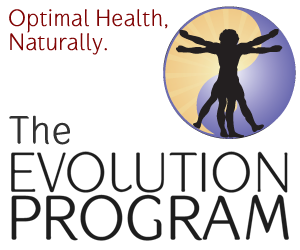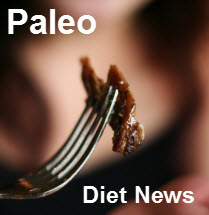Paleo Diet: Ketosis and Liver Disease
A Ketone, Courtesy of Wikipedia
I know what you’re thinking “jeeze, Barry’s been really anti-low-carb recently….what’s the deal!?”. Well, let me be clear that I’m really not against low-carb at all. In fact, I think low-carb or ketogenic Paleo is hands down the best way for a person to lose some body-fat, and reign-in any autoimmune or metabolic issues they may have. But, as I encountered recently with my own diet, staying very-low-carb or ketogenic long-term just doesn’t seem to be a good idea. For some reason, at some point, people began believing that Paleo is by default a low-carb diet…..which it really is not. It can be if fat-loss is desired, but it certainly doesn’t have to be by any stretch of the imagination.
As I’ve mentioned in earlier articles, being very-low-carb for a very-long-time can wreak havoc on a person’s Thyroid function, and according to a short but sweet blog post by Peter of Hyperlipid, Ketosis could eventually cause a certain type of liver disease. On February 13th 2012, Peter posted a blog article titled “NASH on a Ketogenic Diet”.
Firstly, what on earth is “NASH”?
“Nonalcoholic steatohepatitis or NASH is a common, often “silent” liver disease. It resembles alcoholic liver disease, but occurs in people who drink little or no alcohol. The major feature in NASH is fat in the liver, along with inflammation and damage. Most people with NASH feel well and are not aware that they have a liver problem. Nevertheless, NASH can be severe and can lead to cirrhosis, in which the liver is permanently damaged and scarred and no longer able to work properly.
NASH affects
2 to 5 percent of Americans. An additional 10 to 20 percent of Americans have fat in their liver, but no inflammation or liver damage, a condition called “fatty liver.” Although having fat in the liver is not normal, by itself it probably causes little harm or permanent damage. If fat is suspected based on blood test results or scans of the liver, this problem is called nonalcoholic fatty liver disease (NAFLD). If a liver biopsy is performed in this case, it will show that some people have NASH while others have simple fatty liver.” – NIDDK.com
What does Peter have to say about Ketosis and liver disease?
“Just a brief post on the development of NASH in long term ketogenic fed mice because I’ve been side tracked by some other papers: Starvation (Ethan), metformin (tripped over this one myself, things are moving forward from PSS and Oxygen), UCPs and fat oxidation (kindke)…
NASH, it all comes down to this paper (thanks Liz).
Does sustained ketosis produce NASH? Well yes, or at least something like it. Just look at the picture:
The dark staining patch is made up of neutrophils. You don’t want clumps of them aggregating in your liver.
That’s what you get if you feed F3666 to C57BL/6 mice. It is, undoubtedly, intensely ketogenic. But is it anything else?
“These are typical amounts of nutrients calculated from
available information. Actual assay results may vary.
For more information contact Jaime Lecker, Ph.D.”
The paper (and the F3666 pdf) specifies 16% of PUFA in the fat, which seems rather low considering that USA produced lard (the main ingredient) appears to have 32% PUFA (almost all omega 6) but, even at only 16%, these PUFA are 16% of 95% of your total calories. That’s an awful lot of PUFA…
Do PUFA matter for the development of NASH? Probably. From this N and M paper:
“The lipid composition of the different diets which induce steatohepatitis (see Table 4) [19,20,51,52,54], were lard and corn oil, both oils rich in unsaturated fatty acids. We can observe that fat of all the diets inducing steatosis and inflammation (Table 4) were richer in MUFA and PUFA (>30% and >20% of total fat respectively) as compared to our diet (5% and 2%). The injurious effect of unsaturated fatty acids, and particularly n-6 polyunsaturated fatty acids, was associated with enhanced lipid peroxidation and decreased concentrations of antioxidant enzymes, implicating oxidative stress as a causal factor. Indeed, different studies showed the pro-inflammatory effect of polyunsaturated n-6 fatty acids which exacerbate liver oxidative stress [60,61] and promote the development of NASH.”
So there is a message: If you are going to eat a very high fat diet in the long term, you should pay serious attention to PUFA creep. Having cirrhosis is not likely to help you make old bones in good shape. Perhaps go easy on the commercial mayonnaise and just spread some butter on your cheese… Actually I tend to add butter to my beef if it’s too lean (only happens when eating out, no way we would choose lean beef to cook at home!)…
It makes me wonder about saturophobes who might be swilling PUFA to lower their LDL and triglycerides, with or without a LC diet… More potential victims of the cholesterol hypothesis I suppose.”
Make sure you read the full blog post to see the pertinent charts and images.
“PUFA creep” I like that turn of phrase. What I have been seeing in the literature I read recently, is that several supposedly bad foods are not so bad when they are eaten in the absence of Polyunsaturated fatty acids. Another example of a nutrient that is only a truly negative influence when paired-up with PUFA, is fructose. It’s like Polyunsaturated fats are that kid that your parents didn’t like you hanging out with, because he/she was a bad influence on you.
This certainly seems to be more evidence of the fact that there is little that cannot be made worse by the addition of PUFAs. Since PUFA seems to be the link between Ketosis and liver disease, I definitely agree that it would be a good strategy to keep PUFA intake at a bare minimum while maintaining Ketosis for any period of time, just to be on the safe side.
-
If you found this article useful, please click the ‘LIKE’ button below to share on Facebook. We also invite you to leave comments, and join the Paleo Diet News discussion!
Go to www.undergroundnutritionist.com, and download my 30-Day UN-Challenge eBook now……It’s a step-by-step guide to your personal health revolution.
Barry Cripps is a Paleo-based, Certified Nutrition and Wellness Consultant, who operates out of Bowling Green, Kentucky.
For more information please visit: www.undergroundnutritionist.com






You keep posting great stuff! This one I had to write a longer response to …
http://eatingoffthefoodgrid.blogspot.com/2012/03/were-fat-phobes-correct.html
Heather, thanks so much for your comments here on Paleodietnews.com!
I read your blog post, and I think it’s fantastic! I really think that you’ve hit the nail on the head with that. Modern western civilization allows us to eat a huge cornucopia of foods from all over the world, whether they “should” be in season or not, and processed however the “producer” sees fit. The western diet really is the perfect recipe for health disaster. I’ll be watching your blog from now on.